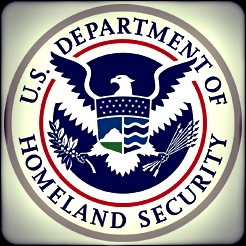A draft memo from a top Border Patrol official expresses alarm that the administration's handling of the border surge in south Texas is inviting more illegal crossings and overwhelming the DHS agencies. The memo calls for the administration to stop releasing illegal crossers into the United States and instead impose harsher "consequences" on illegal crossers.

The document, attributed to Ronald D. Vitiello, deputy chief of the Border Patrol, includes revised estimates from the DHS statistics office on the size of the surge of unaccompanied minors. At the end of May, DHS projected that in FY 2014, the Border Patrol would catch more than 90,000 minors crossing without parents (up from the previous estimate of 74,000). DHS projects that this surge will increase still further in 2015, to 142,000 (up from the previous projection of 114,000).
Although the administration has discussed the surge almost exclusively in terms of an influx of children travelling alone, there are also reports that in fact unaccompanied minors represent only about one-third of the flow. Again today in a press conference call, senior administration officials claimed to have no figures available on the number of family units who have been apprehended.
The administration has stated that most of the unaccompanied children and families are from Central America. Unlike the illegal crossers who are apprehended along other parts of the southwest border, who are either returned quickly or detained for a short time to face charges under the "consequences delivery" strategy, the Central American crossers are being sheltered for a time by the U.S. government, and then released into the country to await deportation proceedings at some future time. According to the memo, only 3 percent of the non-Mexicans apprehended are being returned to their home country. One reason given is because certain Central American countries will not allow repatriation flights on weekends.
Vitiello warns in his memo that the government's failure to penalize illegal crossers simply provides an incentive for even more people to try. He writes that the current practice of releasing Central American families, asylum applicants, and non-criminals, and reuniting unaccompanied minors with family members in the United States will result in increases in new crossing attempts and recidivists. "To stem the flow", he writes, "adequate consequences must be delivered for illegal entry into the United States and for facilitating human smuggling. ... These consequences must be delivered both at the border and within the interior." He suggests that ICE expand its (meager) efforts to investigate smuggling organizations.
In the past, the Border Patrol has succeeded in stemming surges in illegal crossings by responding with a show of force on the line. Twenty years ago, in Operation Hold the Line, the Border Patrol was able to reduce daily crossings from 1,500 per day to less than 100 per day in the El Paso sector simply by posting agents close together to physically prevent and deter crossers before they reached U.S. soil.
In June 2001, the INS office in Mexico City completed the largest ever anti-smuggling operation, in which nearly 8,000 migrants were interdicted on their way to the United States and Canada and dozens of smugglers and document vendors were arrested.
A few years later, under the auspices of Operation Linebacker, state and local law enforcement officers in Texas were enlisted to supplement the efforts of the Border Patrol to counter the cartel-controlled smuggling networks. The local officers arrested more than 30,000 illegal crossers over the life of the operation.
Instead of re-visiting these successful strategies, the Obama administration has said it will take out public service announcements to warn prospective migrants of the dangers of crossing. They also emphasize that the new crossers will not qualify for any current legalization programs, such as the Deferred Action for Childhood Arrivals (DACA). In addition, the administration has started a program to provide legal assistance, presumably to help the unaccompanied minors fight deportation. It's pro bono for the illegal alien minors, but will cost U.S. taxpayers $2 million (in addition to the $2 billion the administration has requested to shelter and transport the recent crossers).
According to senior administration officials, the Central American families are being charged with an immigration violation and told to appear for an immigration court date at some date in the future. It is still unclear if they are charged in the border area before they are released or if they will be charged after checking in with an ICE office near their destination. As we know from past experience, only about one-fourth of those who are released pending a court date will appear to finish their case.
The unaccompanied minors are taken to a holding facility where they are given a medical examination and vaccinations. If there is a family member who claims them, then the government sends an escort from the destination area to pick up and deliver the minor to the alleged family member, at taxpayer expense. Otherwise the government will identify a foster family or other arrangements.
The draft memo articulates two other concerns about the government's management of the surge:
- Inadequate Case Tracking. The cases of minors are tracked separately by DHS and HHS (which has responsibility for resettlement after apprehension), and therefore the government cannot easily report to the public about how many unaccompanied minors are in various stages of processing.
- Distraction from Core Mission. Vitiello writes that the huge effort needed to deal with these cases is "compromising" the agency's ability to address trans-border criminal activity such as human smuggling, drug and weapons trafficking, money laundering, and other functions. He says this distraction "will have immediate and potentially long lasting impacts on criminal enterprise operations within the Rio Grande Valley and across the country."
